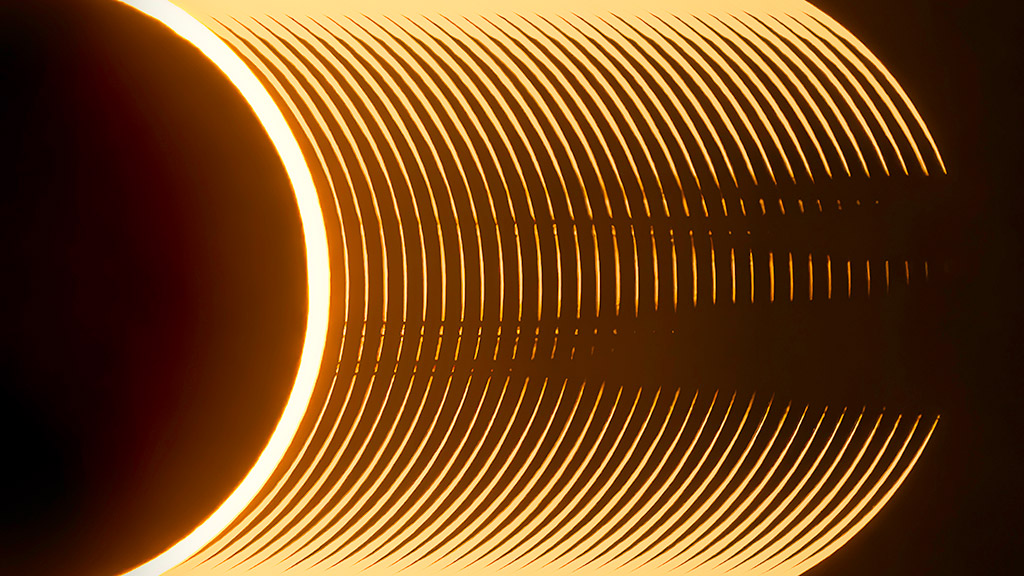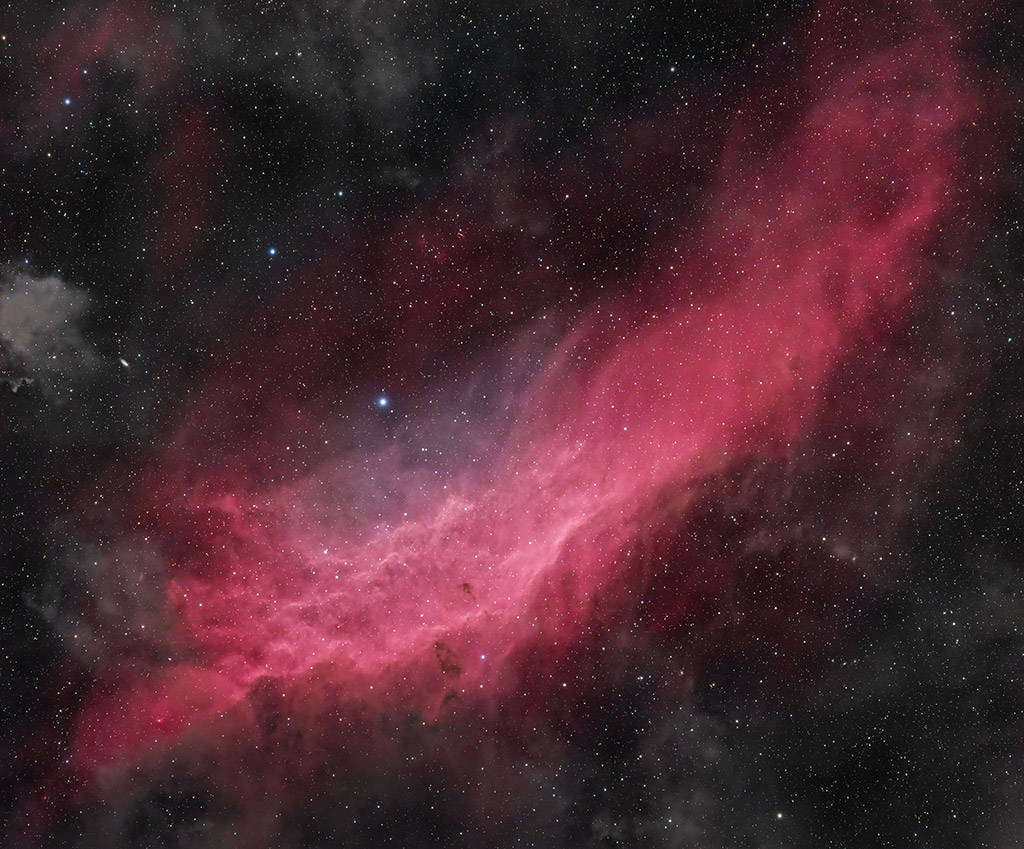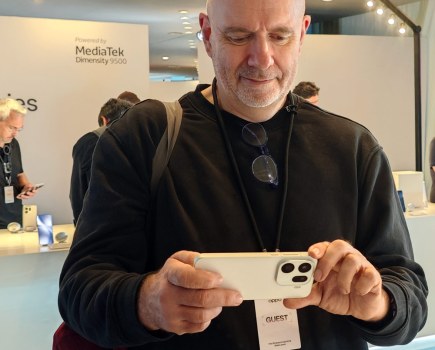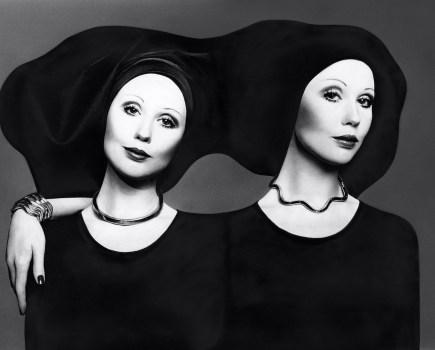Royal Museums Greenwich has announced Ryan Imperio as the overall winner in the 16th Astronomy Photographer of the Year competition, for his photograph Distorted Shadows of the Moon’s Surface Created by an Annular Eclipse. Imperio’s photo captures the progression of Baily’s beads during the 2023 annular eclipse. The Young Astronomy Photographer of the Year award was won by Daniele Borsari for his image NGC 1499, A Dusty California.
The competition celebrates the best of space, the night sky and astrophotography. Winning images showing star-studded nightscapes, planets, moons and the sun will be displayed at the National Maritime Museum in the Astronomy Photographer of the Year 16 exhibition from Friday 13th September,
Astronomy Photographer of the Year: Distorted Shadows of the Moon’s Surface Created by an Annular Eclipse by Ryan Imperio

‘This is a sequence of continuously captured images showing the progression of Baily’s beads at third contact during the 2023 annular eclipse. Baily’s beads are formed when sunlight shines through the valleys and craters of the Moon’s surface, breaking the eclipse’s well-known ring pattern, and are only visible when the Moon either enters or exits an eclipse. These are a challenge to capture due to their brevity and the precise timing needed.’
Young Astronomy Photographer of the Year: NGC 1499, A Dusty California by Daniele Borsari

‘This image features a deep integration on the California Nebula, NGC 1499, an emission nebula in the constellation of Perseus. It’s located at a distance of about 1,000 light years from Earth and it’s visible thanks to the ionization of gases by the blue giant star ξ Persei (Menkib).’
From Royal Museums Greenwich: The overall winner of Royal Observatory Greenwich’s Astronomy Photographer of the Year 16 is Ryan Imperio for his photograph, Distorted Shadows of the Moon’s Surface Created by an Annular Eclipse, that captures the progression of Baily’s beads during the 2023 annular eclipse.
Baily’s beads are formed when sunlight shines through the valleys and craters of the Moon’s surface, breaking the eclipse’s well-known ring pattern, and are only visible when the Moon either enters or exits an eclipse. These are a challenge to capture due to their brevity and the precise timing needed. The image will be on display alongside the winners of the other categories in the accompanying exhibition, opening at the National Maritime Museum on Friday 13 September 2024.
Ryan Imperio said, ‘The images selected each year are absolutely astonishing and I am both thrilled and honoured to have my photo among them. I had hoped my image would be shared in some way but never expected to be selected as a winner, let alone Overall Winner!’
Kerry-Ann Lecky Hepburn, judge and meteorologist said, ’This is an impressive dissection of the fleeting few seconds during the visibility of the Baily’s beads. This image left me captivated and amazed. It’s exceptional work deserving of high recognition.’
The Young Astronomy Photographer of the Year award was won by Daniele Borsari for his image NGC 1499, A Dusty California. Neal White, judge and artist, commented that ‘it demonstrated the future of astronomy photography being fearlessly, and openly, taken forward by a new generation’.

The other winning images include Aurora Borealis over Brighton Seafront by Michael Steven Harris, which beautifully captures the pink hues of the aurora despite the significant light pollution in the area; Tasman Gems by Tom Rae, a Milky Way photograph of the southern hemisphere night sky including the hydrogen clouds of the Gum Nebula and Parallel Lines Over the City by Ran Shen which uses a simple but powerful composition to show the trajectories of Venus and Jupiter over the skyline of Lujiazui, Shanghai. In the Annie Maunder Prize for Image Innovation category, judges awarded the winning prize to Anatomy of a Habitable Planet by Sergio Díaz Ruiz. This image shows Earth as a seemingly alien world as a distant civilisation might study it.
Another of the judges’ favourite images was SNR G107.5-5.2, Unexpected Discovery (The Nereides Nebula in Cassiopeia) a group submission by Marcel Drechsler, Bray Falls, Yann Sainty, Nicolas Martino and Richard Galli. The photograph captures a previously unknown gigantic supernova remnant (SNR) in the centre of the famous constellation Cassiopeia, bringing an exciting discovery to the winning images.
Dr Ed Bloomer, astronomer at Royal Observatory Greenwich said, ‘Once again, I’ve had the great privilege of being on the judging panel for Astronomy Photographer of the Year – an abundance of astonishing works flood to us, and it is a joy to see what the world’s best astrophotographers are producing. It really is true that choosing the winners is a long process, and heavily debated amongst the panel.
This year, I’ve personally enjoyed what I think is a very strong showing for the Aurorae category. The Young entrants are mightily impressive as well, and the Annie Maunder Prize for Image Innovation is surprising, beautiful and intriguing. But there are wonders spread across every category. Try and see as much as you can at the exhibition, you’ll be swept away by what has been created.’

Victoria Lane, Senior Curator, Art and Identity at Royal Museums Greenwich said, ‘It was a privilege to judge the Astronomy Photographer of the Year competition. The range and skill of images, some seemingly impossible to photograph, is astounding. I was particularly impressed by the creativity and innovative approaches of the entries to our Annie Maunder Prize for Image Innovation, which emphasises the art rather than the science of space.’
The Astronomy Photographer of the Year competition is run by Royal Observatory Greenwich, supported by Liberty Specialty Marketsand in association with BBC Sky at Night Magazine. For the 2024 competition there were over 3,500 entries from 58 countries.
Astronomy Photographer of the Year 16 Exhibition:
- National Maritime Museum, London
- Opening 13 September 2024
- rmg.co.uk/shortlist
Featured image: SH2-308: Dolphin Head Nebula © Xin Feng, Miao Gong (China). Winner, The Sir Patrick Moore Prize for Best Newcomer. Taken with a Takahashi TOA-130NS telescope, Sky-Watcher EQ8 mount, ZWO ASI6200MM-Cool camera, 1,000 mm f/7.7, Gain 100, 144 x 600-second H-alpha exposures, 140 x 600-second OIII exposures
Further reading:
- Submit your Macro photography to APOY!
- AP Picture of the Week 2024 – Your best photos shared!
- Minimalist Photographer of the Year winner announced!
Follow AP on Facebook, Twitter, Instagram, YouTube and TikTok







